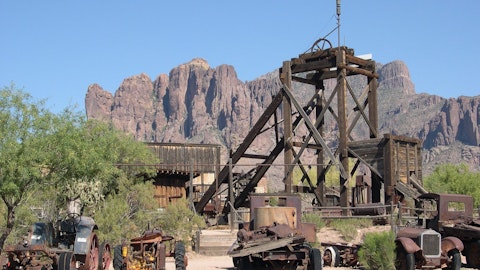In this article, we will be taking a look at the 10 poorest Arab countries. To skip our detailed analysis of the Arab world and poor Arab countries, you can go directly to 5 Poorest Arab Countries.
In a previous article, we covered the 10 richest Arab countries in 2023. In this article, our focus will be on struggling economies in the Arab world. Before digging into the list, we will take a look at different aspects affecting poor Arab countries.
Inequality Within the Arab World
When we talk about the Arab League, we have a mix of economies. There are booming economies like Saudi Arabia, Qatar, and the United Arab Emirates. On the contrary, economies like Syria, Yemen, and Somalia are suffering badly. Are the poorest Arab countries any different from the richest Arab countries? Let’s discuss the dynamics of poverty in Arab countries.
The Arab world is home to some of the world’s largest oil reserves, but not all countries have been able to capitalize on their oil wealth. The main reason for the downfall of many Arab countries is geo-political instability. Iraq and Syria have been at war against terrorism for over two decades. Likewise, Yemen has also suffered from war against Saudi Arabia. The global challenges have affected poor Arab economies severely, making them vulnerable to many risks. The Arab countries including Jordan, Lebanon, Sudan, and Tunisia are at the forefront of challenges arising from a pallid global economy. In that premise, the Arab world and Africa are two of the most unequal regions in the world. The inequality among Arab countries has left the region in a see-saw scenario.
If you want to read about the poorest African countries, you can read our article 30 poorest countries in Africa.
The Solution
In a UN meeting on June 8, United Nations’ Under-Secretary-General for Political and Peacebuilding Affairs, Rosemary DiCarlo, shared her views on the strategic significance between the United Arab Emirates and other Arab League countries for the development of the region. The conflicts in Arab countries have dramitcally affected the economy and human development in countries like Sudan, Palestine, and Syria. DiCarlo highlighted the point that notable regional organizations including the League of Arab States, the Intergovernmental Authority on Development, the African Union, and other important players will be the key to ending the conflict in Sudan. As for her views on rising tensions in Palestine, DiCarlo believes that the only way forward is the “two-State solution” for long-term peace. The conflict in Palestine has created a huge financial crisis. The Arab League and United Nations are on the same page to achieve this common goal in conflict zones in Arab. “Together, we can achieve what neither organization could achieve on its own,” said Rosemary DiCarlo.
COVID-19 Impact and Natural Disasters
COVID-19 was devastating for the entire world, but it wiped away the economies of poor countries. The Arab region is still young and needs a lot of development. Even the biggest economies in Arab are working on new sectors due to limitations and vanishing oil reserves.
On May 30, the United Nations Development Programme published its second Arab multidimensional poverty report. The report highlights that Arab countries were going through severe challenges such as instability, conflict, displacement, and other economic issues before the COVID-19 pandemic. The global pandemic and the Ukraine war have inflamed money metric poverty in the region. Most of the poor Arab countries do not have enough resources to cope with any more challenges.
Lockdowns during the pandemic caused a plunge in aggregate demand for labor in the private sector which had a severe effect on households. Small and medium-scale companies were affected the most. Moreover, the drop in oil prices during the COVID period weakened the remaining economy of poor Arab countries. In 2020, it resulted in the Arab world’s total gross domestic product contracting by 6.3%, compared to the global contraction of 3.2%.
Moreover, natural disasters are worsening the situation in the region. The Youth Envoy for the President of the 27th UN Climate Change Conference, Omnia El Omrani, pointed out that nearly 60% of the Arab population comprises youth under 30 years of age and they are facing mental health issues.
U.S. Companies’ Influence in Poor Arab Countries
U.S. companies are operating in different capacities in Arab countries. Despite the struggle in poor Arab countries, there are a few nations that are trying to revive their economies, and one of them is Morocco. Some of the top U.S. companies with operations in the region include PepsiCo, Inc. (NASDAQ:PEP), Citigroup Inc. (NYSE:C), and General Electric Co. (NYSE:GE), and The Coca-Cola Company (NYSE:KO). The Coca-Cola Company (NYSE:KO) operates through various subsidiaries and partners in different regions of the world. One of the company’s bottling partners is Equatorial Coca-Cola Bottling Company (ECCBC) based in Morocco. The Equatorial Coca-Cola Bottling Company operates in 13 countries across North and West Africa. Whereas, PepsiCo, Inc. (NASDAQ:PEP)’s subsidiary Pepsi-Cola Maghreb SARL in Morocco oversees operations in the region.
Over the years, U.S. companies have played a vital role in the Arab economy. The rich Arab countries already have big U.S. firms operating in the region. Whereas, poor Arab countries due to economic constraints limit their capability to attract big firms. In March, Francois Xavier Batalingaya, the UN Resident Coordinator in Comoros during an interview talked about the business opportunities in the country. Batalingaya said:
“Comoros has significant untapped potential or business opportunities. For example, the tourism industry could be further developed. Looking at the tourism industry in the region, Comoros is the only country whose tourism industry is still not well developed. Neighbouring Seychelles and Madagascar receive between 400,000 and 500,000 tourists per year.”
PepsiCo, Inc. (NASDAQ: PEP) is one of the largest multinational corporations in the world. On April 25, PepsiCo, Inc. (NASDAQ:PEP) posted strong earnings for the first quarter of 2023. The company reported a revenue of $17.85 billion, beating revenue estimates by $572.95 million. The company reported earnings per share of $1.40 and surpassed EPS consensus by $0.05. PepsiCo, Inc. (NASDAQ:PEP) is seeking new opportunities around the world. In the Q1 2023 earnings call, the company made comments on there new plans:
“We are investing in our innovation, investing in our brands, investing obviously in value in different ways, pricing, sizing in mostly. So we’re seeing a good positive competitive environment in the U.S., in Europe, and also in our developing markets consistently across the world. When it comes to pricing, as we said earlier in February, we have mostly taken the pricing already this year that we needed to cover for our cost increases. And that is where we stand at this point.
We’re seeing a deceleration of inflation, not a reduction of cost, but a deceleration of inflation. And we think that with the pricing that we’ve taken already most of our business around the world, that should be sufficient. Obviously, there are some markets, highly inflationary markets around the world where we might have to take additional pricing. If you think about Argentina, Turkey, Egypt though those kind of markets where the currencies are suffering, but the majority of our pricing is already done.”

Our Methodology
For our list of the poorest Arab countries, we sourced each country’s GDP per capita data from The World Bank’s database. We narrowed down our selection to ten Arab countries with the lowest GDP per capita and ranked them in descending order of this metric. Syria was ranked the second poorest Arab country, however, its data was from 2020. Here are the 10 poorest Arab countries.
10 Poorest Arab Countries
10. Palestine
Total GDP per capita of the country (2022): $3,789.3
The longtime conflict in Palestine has made the country’s economic situation worsen over the years. The trade and other restrictions by Israel in Palestine create serious economic troubles. Palestine is ranked 10th on our list of the poorest Arab countries and has a GDP per capita of $3,789.3, as of 2022.
Some of the leading U.S. companies operating in the Arab world include PepsiCo, Inc. (NASDAQ:PEP), Citigroup Inc. (NYSE:C), General Electric Co. (NYSE:GE), and CoCa-Cola Co. (NYSE:KO).
9. Tunisia
Total GDP per capita of the country (2022): $3,776.7
Tunisia is suffering from unstable political and economic circumstances. The country entered a new political phase in July 2022 with the introduction of a presidential system and a new constitution. However, growth and job outcomes have worsened as the rising import bills have put pressure on the currency. Undergoing a transition period, Tunisia is ranked ninth on our list of poorest Arab countries.
8. Morocco
Total GDP per capita of the country (2022): $3,527.9
Morocco’s economy has suffered immensely following domestic and international shocks. The real GDP plunged from 7.9% to 1.2% between 2021 and 2022. However, the Moroccan government’s ongoing economic developments will help to give a cost-effective and equitable response to future shocks. Morocco Now is a large-scale initiative by the government to pave way for foreign direct investments. The country is ranked eighth on our list of the poorest Arab countries.
7. Djibouti
Total GDP per capita of the country (2022): $3,136.1
Djibouti seems to have a favorable medium-term economic outlook, with GDP expected to grow by 5.4% in 2023 and 6.5% in 2024. However, the country is exposed to systemic weaknesses, and the justice system is vulnerable to political influence. Djibouti ranks among the poorest Arab countries.
6. Mauritania
Total GDP per capita of the country (2022): $2,190.7
Mauritania is essentially a desert country and the country’s economy heavily depends on capital investment and technical assistance from abroad, which leaves Mauritania vulnerable to global market fluctuations. The country is ranked sixth on our list of the poorest Arab countries.
Prominent U.S. companies that have operations in the Arab world include PepsiCo, Inc. (NASDAQ:PEP), Citigroup Inc. (NYSE:C), General Electric Co. (NYSE:GE), and CoCa-Cola Co. (NYSE:KO).
Click to continue reading and see 5 Poorest Arab Countries.
Suggested articles:
- 25 Poorest Cities In The US That Are Getting Poorer
- 50 Poorest Cities in Every State in the US
- 20 Poorest Countries in Europe
Disclosure: None. 10 Poorest Arab Countries is originally published on Insider Monkey.





